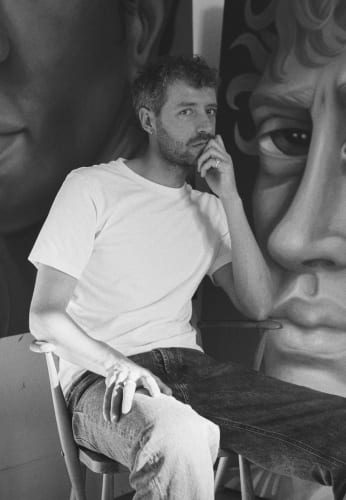If we now exist in an 'information age', it comes at the cost of physical experience. Regarding the world through technology, we see more but feel less and less. Perhaps the slowed beat of painting can offer respite within this culture of excess - not through shy passivity, but in accepting the open-ended possibility of this downbeat cultural moment.
This desire stitches together an invocation of feeling across a practice that is shifting from paintings of heavily stylised strangeness towards a more settled, sombre reality characterised by greater visual restraint. Appearing as if atmospheric visions or hallucinations, the figures Cheetham paints maintain an ambiguity of time, gender and physical expression that enables a freedom of movement between the external world where the body is socially inscribed and the internal world of psychic reality - the lived body with its drives and desires. It is the tension at this site of transition, this conscious and unconscious coalescence that he wishes to follow, slipping into a flow of time in which all our experience unfolds.
Engaging directly with the historical weight of portraiture, these new figures look out of the painted surface acknowledging the presence of someone else in the room - we are there and we are part of the work's unfurling. Yet this relationship is never in balance - heads turn at an angle as if only momentarily attentive to our presence, caught between acknowledgement and dismissal. Both painted figure and viewer oscillate between vulnerability and strength, at once consumed by the moment and our gaze whilst all together resistant to this predicament.
In this repetitive/ constant search for a boundary, a point of tension within Cheetham's paintings, compositional elements that verge on romanticism are curtailed through simplification and deliberate restraint; facial features swollen, enlarged and saturated as if at breaking point, somehow remain steadfastly resistant to betraying defined emotion. Indeed, the true power of these paintings is in the preservative nature of the medium itself: oil paint elongates and suspends moments that could so easily be lost; it enables one to attempt to capture this ambiguous, fraught in-between. If the paintings achieve a physical response, it is through this subtle ambiguity not because it is painted plain. We feel these paintings beyond the emotions they portray.
